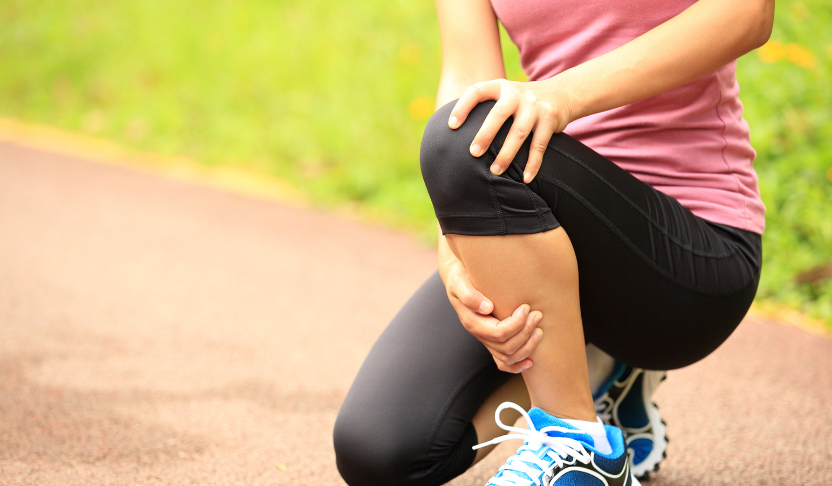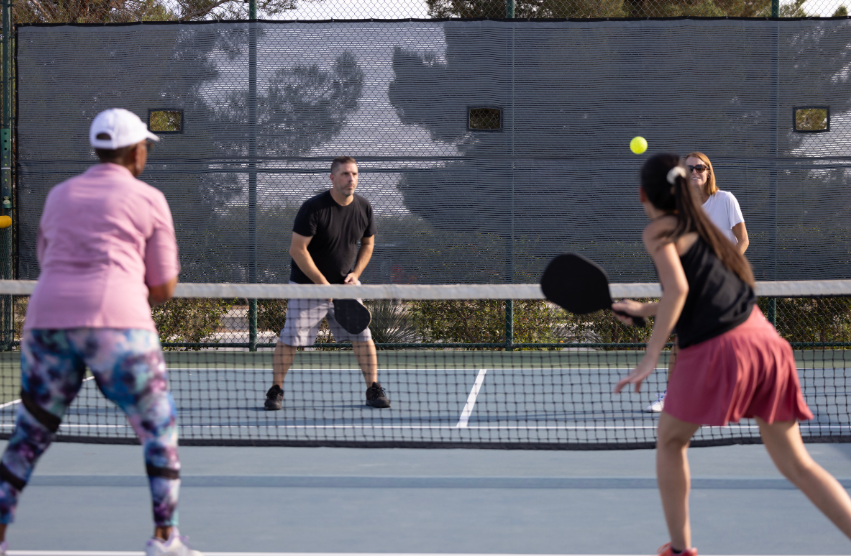Although it’s generally considered a low-impact activity, pickleball injuries can still occur. Here are 18 tips to avoid common pickleball injuries.
Pickleball is a popular and fun sport that combines elements of tennis, badminton, and table tennis. Although it’s generally considered a low-impact activity, injuries can still occur. Here are some common pickleball injuries and tips on how to avoid them:
- Ankle Sprains: Rapid changes in direction and quick stops can put stress on the ankle joint, leading to sprains. To avoid this, wear proper footwear with good ankle support and always warm up before playing. Balance and agility exercises can also help strengthen your ankles.
- Tennis Elbow (Lateral Epicondylitis): Overuse of the forearm muscles can cause inflammation in the tendons, resulting in pain around the outer elbow. To prevent this, use a lighter paddle with a larger grip, and practice proper technique to minimize strain on the arm. Also, consider wearing a compression sleeve or elbow brace.
- Achilles Tendinitis: This occurs when the Achilles tendon becomes inflamed due to overuse. To prevent this, stretch your calf muscles regularly and strengthen them with exercises like calf raises. Make sure to wear supportive shoes and avoid playing on hard surfaces for extended periods.
- Rotator Cuff Injuries: The rotator cuff muscles in your shoulder can become strained or injured from repetitive overhead movements. Strengthen your shoulder muscles with exercises such as external rotations, and pay attention to proper technique when hitting overhead shots.
- Plantar Fasciitis: This condition is characterized by pain in the bottom of the foot, often near the heel. It’s caused by inflammation of the plantar fascia, a thick band of tissue connecting the heel bone to the toes. To avoid this injury, wear supportive shoes, stretch your calf muscles and plantar fascia, and maintain a healthy body weight.
- Knee Injuries: Sudden stops and changes in direction can stress the knee joint, leading to injuries such as meniscus tears or ligament strains. Strengthen your leg muscles with exercises like squats and lunges, and always warm up before playing.
- Hamstring Strains: Sudden acceleration or deceleration can cause these muscle strains in the back of the thigh. To prevent this, warm up properly, stretch your hamstrings regularly, and strengthen them with exercises like hamstring curls.
- Wrist Injuries: Repetitive motions, such as hitting the ball with a paddle, can strain the wrist. Strengthen your forearm muscles with exercises like wrist curls, and use a proper grip on the paddle to avoid excessive wrist movement.
- Core Strengthening: A strong core is crucial for maintaining balance and stability during play, which can help prevent injuries. Include core exercises like planks, Russian twists, and leg raises in your workout routine.
- Proper Warm-up and Cool-down: Always start your pickleball session with a proper warm-up, which should include dynamic stretching and light aerobic exercises like jogging or jumping jacks. After playing, cool down with gentle static stretching to help maintain flexibility and reduce muscle soreness.
- Gradual Progression: Don’t jump into intense play if you’re new to pickleball or returning from a break. Gradually increase the intensity and duration of your sessions to allow your body to adapt to the demands of the sport.
- Hydration and Nutrition: Staying hydrated and maintaining a balanced diet can help prevent injuries and improve overall performance. Drink plenty of water before, during, and after playing, and consume a mix of carbohydrates, proteins, and healthy fats to fuel your body.
- Cross-Training: Participate in other forms of exercise like swimming, cycling, or yoga to improve your overall fitness and reduce the risk of overuse injuries from playing pickleball too frequently.
- Rest and Recovery: Give your body time to recover between sessions by taking rest days and incorporating activities like foam rolling or massage to help with muscle recovery.
- Proper Court Conditions: Ensure that the playing surface is free from debris, puddles, or other hazards that could lead to slips and falls. Also, make sure the court lines are clearly visible to prevent confusion during play.
- Protective Gear: Consider wearing protective gear, such as knee pads, wrist guards, or eyewear, to prevent injuries from falls or contact with the ball.
- Learn and Practice Proper Technique: Invest time in learning proper pickleball techniques, such as footwork, grip, and stroke mechanics. This can help reduce the risk of injuries resulting from poor form or excessive strain on your muscles and joints.
- Know Your Limits: Don’t push yourself beyond your physical limits. If you feel pain, discomfort, or extreme fatigue, take a break or stop playing. If the pain persists, consult a healthcare professional.
By following these tips and being mindful of your body’s signals, you can reduce the risk of injuries and enjoy pickleball safely.
From Mayo Clinic:






